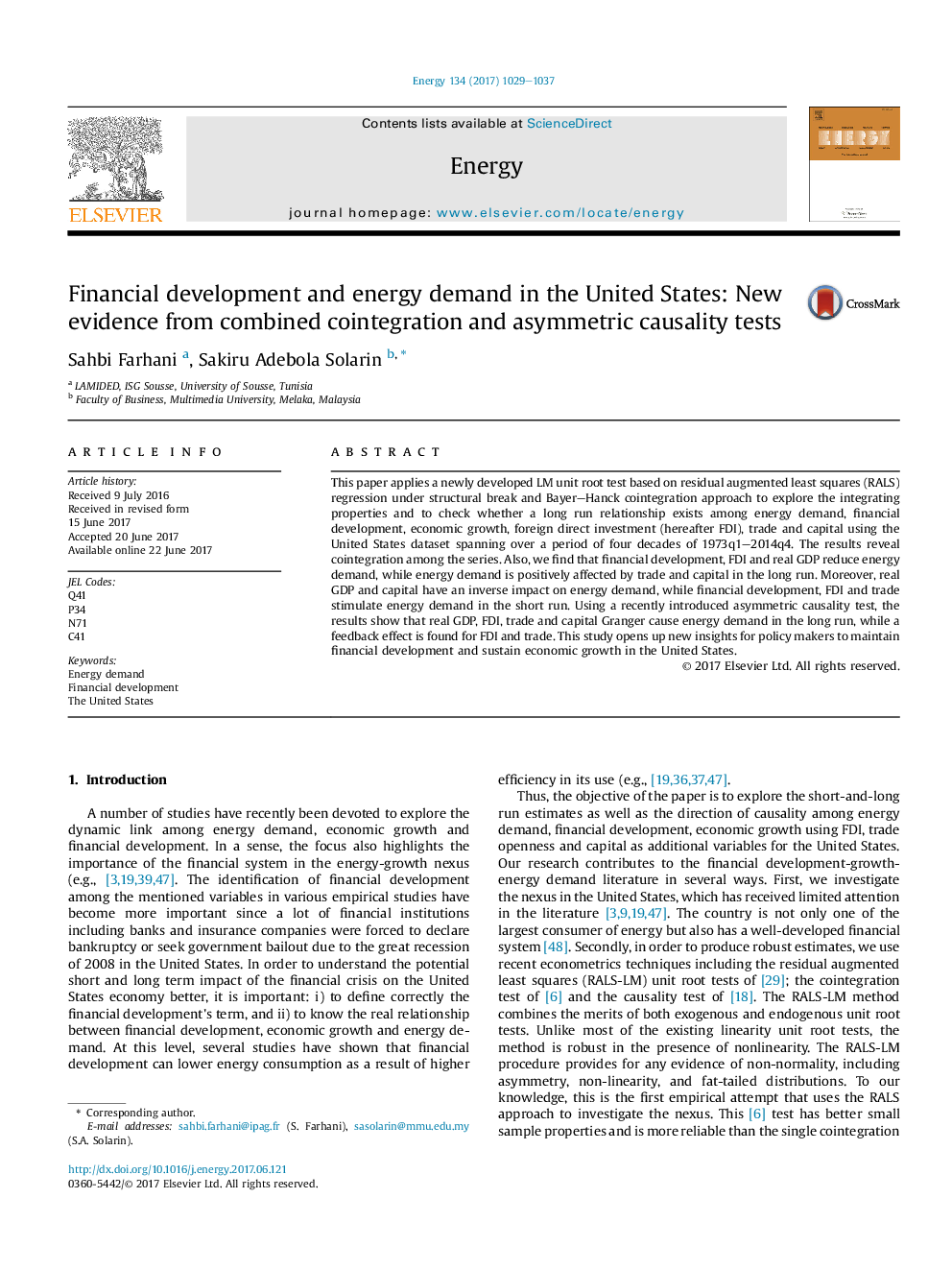| Article ID | Journal | Published Year | Pages | File Type |
|---|---|---|---|---|
| 5475895 | Energy | 2017 | 9 Pages |
Abstract
This paper applies a newly developed LM unit root test based on residual augmented least squares (RALS) regression under structural break and Bayer-Hanck cointegration approach to explore the integrating properties and to check whether a long run relationship exists among energy demand, financial development, economic growth, foreign direct investment (hereafter FDI), trade and capital using the United States dataset spanning over a period of four decades of 1973q1-2014q4. The results reveal cointegration among the series. Also, we find that financial development, FDI and real GDP reduce energy demand, while energy demand is positively affected by trade and capital in the long run. Moreover, real GDP and capital have an inverse impact on energy demand, while financial development, FDI and trade stimulate energy demand in the short run. Using a recently introduced asymmetric causality test, the results show that real GDP, FDI, trade and capital Granger cause energy demand in the long run, while a feedback effect is found for FDI and trade. This study opens up new insights for policy makers to maintain financial development and sustain economic growth in the United States.
Related Topics
Physical Sciences and Engineering
Energy
Energy (General)
Authors
Sahbi Farhani, Sakiru Adebola Solarin,
